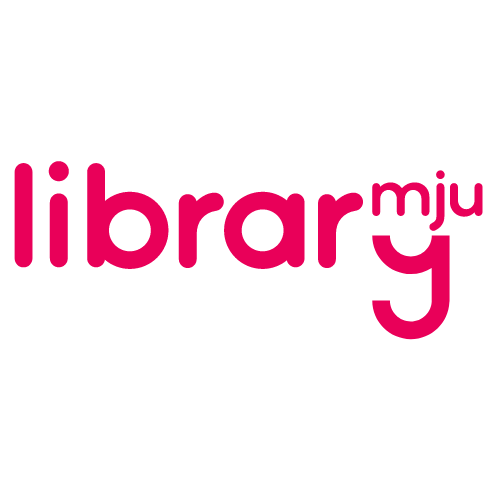According to the very long history of Maejo University which is more than 75 years old now, it is not clear when the library was established. It was estimated that the library might have been established in 1934 as the library of Northern Primary School, which was established in the same year. Later, this school was upgraded to Chiang Mai Agricultural Technology and in 1975 it was upgraded once again to be the Institute of Agricultural Technology and transferred from the Department of Vocational Education in the Ministry of Education to the Ministry of Higher Education. However, it was transferred back to the Ministry of Education later when the Ministry of Higher Education was emerged into the Ministry of Education.
When the Institute of Agricultural Technology was established in 1975, the library was a department under the Educational Service Division in the Office of the President. There were only 2 full-time personnel: 1 general administration officer working as the head of the library department, and one full-time employee. The library was located in the central area of the President’s Office Building. There were only 4,643 books that had been used before the institute was upgraded to the Institute of Agricultural Technology. The library gave services to 90 undergraduate students in 3 major programs, namely, crops, horticulture, and poultry. In the institute, there were 44 instructors, 12 officers, and 67 employees. In the library department, there were 2 persons, one works as the head of the department and the other as the library administrator and a janitor.
In 1977 there was one professional librarian and one typist. Later the library got a budget to build a 3-storey independent building with its capacity of approximately 4,000 square meters which could hold about 500 seats. It was opened on August 26, 1983, with 17,205 books and 7 personnel at the time and the building has been used as the main library ever since. Later, the library was upgraded to a division under the Office of the President as announced in the Government Gazette No. 103, Part 109 on June 26, 1986. Its functions then were to give academic services to the instructors, students, and officials of the university as well as the outsiders. Its organizational structure was divided into General Service and Administration Sector, Library Resource Sector, Library Resource Analysis Sector, Service Sector, and Educational Audio-Visual Sector
In the fiscal year of 2007, the Library Division received a budget of 55 million baht to expand its original building to more 6,130 square meters of utility space. This is to facilitate the convenience of the library consumers and to accommodate the growing number of the students and personnel who want to use the library services more. The construction began on June 30, 2007, and was completed on August 1, 2008.
The Library Division of Maejo University has its main mission to serve as the center of the university’s information services to promote and support the university’s teaching and learning based on the university curricula and to provide additional research resources outside of the classroom, as well as to support research studies. The library has been developed its capacity to increase its potential for information services. There are two main sources of funding: the national budget and the university income budget, which is derived from the library maintenance fees from all students of every level and every semester.
In addition, there were international organizations that had supported the library in various ways. For example, ACNARP of Australia gave budget to buy academic textbooks through the Department of Agriculture for four years, the British Council of England sent a volunteer librarian to help improve the library for 4 years and AUIDP or IDP of Australia provided funds for training in the country and aboard to the librarians and funds for buying international journals and audio-visual equipment.
In regards to the importance of cooperation between organizations, the Library Division of Maejo University has joined as a part of the cooperation between libraries of higher education institutions across the country. At present, this kind of collaboration is under the name of the Thai Library Integrated System or ThaiLIS in carrying out various activities and joining the Provincial University Library Network (PULINET). In addition, some library personnel have been participating in activities as members of the Library Club in Chiang Mai, which is a collaboration of local library networks.
To improve information sources within Maejo University, the Library Division set up a library network within the university since there are many faculty libraries in the university. Therefore, it is a mission of the Library Division to act as a mainstay in the development of information resources to reach a standard and be effective so that they can provide information services worth the most of the benefits.
In other words, on the path of being a library of one of Thailand’s higher education institutions over a long period, the Library Division of Maejo University has been progressed very well. Modern technology has been used to enhance the efficiency of the service in the field of research databases. It also includes the preparation of digital databases, video-on-demand media services, borrowing, and returning services with information technology systems, good security with information resources including publication materials, audiovisual materials, media services, digital media, and online databases. We are constantly improving the quality of our 42 personnel because our goal is to make the Maejo University Library a long-life learning resource for both the university’s population and the local people.
The library division was established as “a Library Office”, according to the 2009 Maejo University Council Announcement (the third Version) on September 9, 2009. Later, on November 1, 2009, its organizational structure was divided as follows: 1) Administrative and Clerical Mission Group, 2) System and Communications Network Mission Group, 3) Information Service Mission Group, 4) Archives and Local Information Mission Group, and 5) Educational Technology Mission Group. At present, 42 persons are working in the library consisting of 4 senior professional librarians, 1 professional librarian, 8 librarians, 1 senior professional information scientist, 8 information scientists, 1 bookbinding officer, 6 library workers, 2 general managers, 2 financial and accounting officers, 1 supply analyst, 1 administrative practitioner, and 1 technician.


